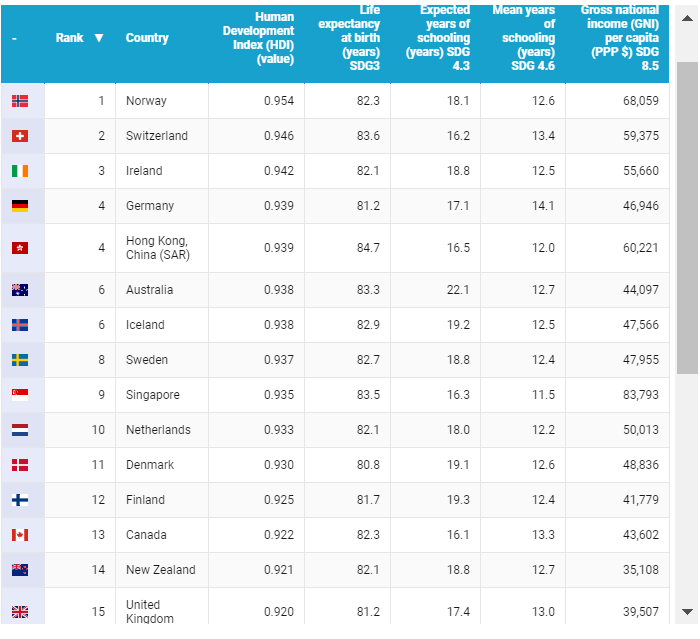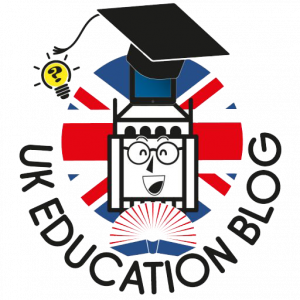Nelson Mandela once said:
“Education is the best weapon you can use to transform your world.”
While every nation on earth has its own unique education system, it is worth asking which are the countries with the best education system in the world and which is the best teaching country in the world, because there can be a huge difference between the leading countries in education when it comes to their education levels around the world.
This leaves the most successful and leading nations in the world education rankings ahead of the ones that are struggling.
You can find the current ranks of all countries, which also indicates the countries with the best education, on the UN Nations Development Programme Page:

According to the Brookings Institution, the developing world is one hundred years behind developed nations, especially when it comes to countries offering free education at a high level.
Nations with the best educations systems keep the student-teacher ratio low. They also keep their students longer in school and they graduate with the greatest number of learners with a high-quality education.
So, the question is: which countries are excelling when it comes to education and which is the best country for education?
Read on to find out how the rest of the world can emulate their successful strategies and education techniques to identify what country has the best education system or which is the world’s best education country.
1. Australia
 Australia is one of the best destinations for students who want a quality education. It has been placed at the top of the UN Human Development Report. 100 percent of their kids are enrolled in primary and secondary school. And 94 percent of the citizens above 25 years have secondary education. The teacher-student ratio in Australia is 14:1. The nation supports its teachers by giving them incentives especially those in rural hardship areas.
Australia is one of the best destinations for students who want a quality education. It has been placed at the top of the UN Human Development Report. 100 percent of their kids are enrolled in primary and secondary school. And 94 percent of the citizens above 25 years have secondary education. The teacher-student ratio in Australia is 14:1. The nation supports its teachers by giving them incentives especially those in rural hardship areas.
2. Japan
Japan has its students focused intensely on academics starting at age six. At the moment, the dropout rate is only 0.2 percent. Students in Japan perform well, especially in science. The nation was ranked second in the global education performance report and seventh in the student assessment survey that tests fifteen-year-old students to compare the education systems of different countries. At the moment, the literacy rate of their citizens stands at an impressive 99 percent!
3. South Korea
 South Korea is famous for its standardized tests. Students in this republic are usually assigned to both private and public schools. And they perform remarkably well according to the education performance report. South Korean parents are well-known for spending thousands of dollars on holiday tuition and encouraging their kids to study for long hours every day.
South Korea is famous for its standardized tests. Students in this republic are usually assigned to both private and public schools. And they perform remarkably well according to the education performance report. South Korean parents are well-known for spending thousands of dollars on holiday tuition and encouraging their kids to study for long hours every day.
4. Finland
 Who thought that lots of academic breaks can help with improving the performance of students? The Finland education system mandates that their children should begin studying at age seven and have a fifteen-minute outdoor session after every hour. The school day comprises of five hours only. And while students are not graded until fourth grade, their achievements cannot be ignored. Finland has consistently taken the sixth position in reading and twelfth in math in the PISA survey. And it’s not a few students who take the lead. The disparity between the strongest and weakest students in Finland is very minimal.
Who thought that lots of academic breaks can help with improving the performance of students? The Finland education system mandates that their children should begin studying at age seven and have a fifteen-minute outdoor session after every hour. The school day comprises of five hours only. And while students are not graded until fourth grade, their achievements cannot be ignored. Finland has consistently taken the sixth position in reading and twelfth in math in the PISA survey. And it’s not a few students who take the lead. The disparity between the strongest and weakest students in Finland is very minimal.
5. Norway
 Norway has been rated the best when it comes to human development by the UN. The number one priority of this nation is education. At the moment, the nation spends 6.6 percent of its total GDP on education. This is 1.5 percent more than the United States. It also keeps the student-teacher ratio at 9:1. It relies on a national curriculum that teachers use to educate their students. The students are not defined by their grade level. Some of the amazing courses that you’ll find in their learning institutions include music, food, and health and physical education. Their system is working at an optimum level. 100 percent of the population in Norway is enrolled in learning institutions. And 97 percent have secondary education.
Norway has been rated the best when it comes to human development by the UN. The number one priority of this nation is education. At the moment, the nation spends 6.6 percent of its total GDP on education. This is 1.5 percent more than the United States. It also keeps the student-teacher ratio at 9:1. It relies on a national curriculum that teachers use to educate their students. The students are not defined by their grade level. Some of the amazing courses that you’ll find in their learning institutions include music, food, and health and physical education. Their system is working at an optimum level. 100 percent of the population in Norway is enrolled in learning institutions. And 97 percent have secondary education.
6. Singapore
 Singapore is one of the nations that heavily supports academic education. Their education system is exam-oriented. This means that the nation strives to teach children mostly academic skills and they are famous for their mathematics programs. The students from Singapore took the first position when it came to cognitive skills and third position for overall cognitive ability. Teachers are supported to study and grow professionally throughout their careers.
Singapore is one of the nations that heavily supports academic education. Their education system is exam-oriented. This means that the nation strives to teach children mostly academic skills and they are famous for their mathematics programs. The students from Singapore took the first position when it came to cognitive skills and third position for overall cognitive ability. Teachers are supported to study and grow professionally throughout their careers.
7. Netherlands
 The Netherlands takes the eighth position in Pearson’s education ratings. It provides alternative languages that students in grades one to four can learn. They have managed to keep their graduation rate at 94 percent by funnelling extra funds to the minority and poor students. As UNESCO reports, primary schools with a high proportion of minority students have an average of 58 percent more support staff and tutors compared to other learning institutions.
The Netherlands takes the eighth position in Pearson’s education ratings. It provides alternative languages that students in grades one to four can learn. They have managed to keep their graduation rate at 94 percent by funnelling extra funds to the minority and poor students. As UNESCO reports, primary schools with a high proportion of minority students have an average of 58 percent more support staff and tutors compared to other learning institutions.
8. Germany

Germany took the seventh position in the Education Index compiled by the UN. They have been reforming and updating their education policies by adopting national standards and increasing the support of disadvantaged students. The country is also dedicated to pushing digitalization forward in schools to teach the youngsters digital skills that are vital for future work. Germany is the next best place to educate your child completely for free at a high standard.
Learning from other nations helps improve education worldwide
There are many reasons why some countries perform better than others in the education sector. One main factor that emerges from this comparison, is clear: it is the adult to child or teacher to student ratio and the school attendance rate or percentage of children in education. The more children are enrolled in education, the better the outcomes for the overall nations’ scores as well as in subject categories such as English writing or math.
Leaders in developing countries need to learn from the leading nations in education listed above if they want to get the same or even better results as the top countries with good education. However, they need to adjust any scheme or program to their own situation with regards to funds, resources, and cultural conditions. Parents play a vital role in improving education too by working with educators and policymakers closely, providing feedback and recommendations.
Author Profile

- Administrative Assistant at EduIntello
- Jessica Chapman is a writing editor from Chicago working at a top essay writing and with eduintello.com. She is into sport and politics, enjoys traveling.
Latest entries
 distance learningDecember 22, 20208 Most Pressing Challenges in Education Arising from the COVID-19 Pandemic
distance learningDecember 22, 20208 Most Pressing Challenges in Education Arising from the COVID-19 Pandemic learningDecember 21, 20207 Ways to Tackle Student Absenteeism
learningDecember 21, 20207 Ways to Tackle Student Absenteeism educationNovember 3, 2020Which Countries Offer the Best Education in the World?
educationNovember 3, 2020Which Countries Offer the Best Education in the World?








